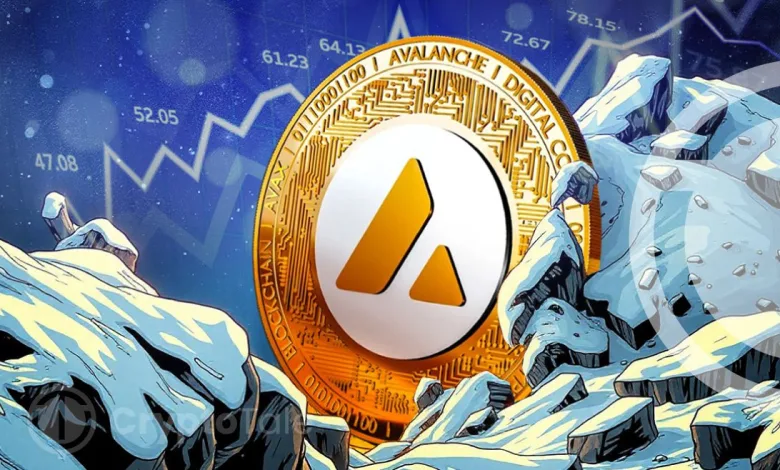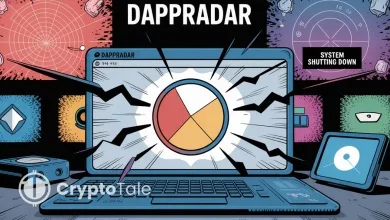Review on AVAX: Unique Architecture & Consensus Mechanism

Avalanche is a cutting-edge blockchain platform that is not just a contender but also a rival to the Ethereum blockchain. Designed to address some of the key limitations, Avalanche offers a unique blend of speed, scalability, and security. By leveraging a novel architecture and consensus mechanisms, Avalanche not only supports dApps and smart contracts but also ensures that developers can build with flexibility and efficiency. In this article, we’ll look at Avalanche, its workings, and its consensus mechanisms.
What is Avalanche?
Avalanche (AVAX) is a popular blockchain platform designed with the goal to rival Ethereum. Like Ethereum, developers can build and develop their own smart contracts and decentralized applications (dApps) on the Avalanche network. Furthermore, it supports the Solidity programming language and is compatible with the Ethereum Virtual Machine (EVM). This makes it easy for developers to integrate dApps into the Avalanche ecosystem.
AVAX is Avalanche’s native currency, used for various purposes, like paying transaction fees, securing the network, and participating in governance through staking. The platform addresses challenges like scalability, speed, and security by processing over 4,500 transactions per second while maintaining low latency and high security through its unique consensus mechanism.
Unlike Ethereum, which has an unlimited supply, Avalanche has a limited supply of 720 million AVAX tokens. Nearly half of these were distributed at launch, and the other half were released through staking rewards and other incentives.
History of Avalanche
In 2018, Emin Gun Sirer, a well-known computer science professor and blockchain expert, and a team of researchers from Cornell University came up with the idea for Avalanche. Their goal was to create a highly scalable and secure blockchain platform to address the various shortcomings of existing blockchains.
Avalanche’s whitepaper was released in 2018 by a group called “Team Rocket” on the InterPlanetary File System. The whitepaper included a new consensus protocol that claimed to be faster and more efficient than existing protocols.
In 2019, Emin Gun Sirer, Kevin Sekniqi, and Maofan “Ted” Yin founded Ava Labs. Ava Labs raised funds for the project through a series of funding rounds, including an ICO and a private token sale. Avalanche was officially launched in September 2020 and allowed developers to build and deploy dApps on its ecosystem.
Avalanche caught with the wave of times, with the entire crypto ecosystem experiencing a major bull run in 2021. During this time, AVAX attracted a lot of attention, with prices climbing to an all-time high of $144.96. Furthermore, numerous dApps were created or migrated to the network due to its high throughput and low transaction fees.
How Does Avalanche Work?
The Avalanche architecture is divided into three distinct built-in blockchains, each serving a different purpose within the network. They are,
- X-Chain (Exchain Chain): This is a dedicated blockchain for creating and trading assets and for enabling cross-chain transfers.
- P-Chain (Platform Chain): This is the network’s metadata platform and uses the Snowman Consensus mechanism. It coordinates validators and enables the creation of custom blockchains called subnets. Subnets have their own rules and functionalities and can be used by developers to create their blockchains.
- C-Chain (Contract Chain): This is where the smart contracts are executed. It is also compatible with the Ethereum Virtual Machine, which allows developers to easily port dApps from Ethereum to Avalanche, making it a diverse ecosystem.
What Are the Consensus Protocols Used in Avalanche?
Unlike most blockchains that employ commonly used consensus mechanisms like Proof of Work (PoW) or Proof of Stake (PoS), Avalanche uses different consensus mechanisms.
- Avalanche Consensus Protocol (ACP)
It is a directed acyclic graph (DAG) structured protocol with features like parallelizability, high throughput, and the ability to prune the blockchain. It uses a system of repeated random sampling to achieve consensus among nodes.
- Voting: Different from the consensus mechanism, which requires the participation of all the validators to vote, in ACP, randomly chosen subsets of validators are selected to vote on transactions. This method enables significant scalability and allows for fast transaction processing by minimizing communication overhead.
- Finality: Once the consensus is reached and the decision is final, Avalanche achieves near-instant transaction finality, which is totally different from the time (hours) it takes for some blockchains.
- Parallelizability: Avalanche processes the transactions in parallel, allowing for multiple transactions to be confirmed simultaneously. This method enables the network to improve speed and efficiency.
- Snowman Consensus Protocol
This consensus protocol is specifically designed for smart contracts where the data is ordered linearly. It is an extension of ACP that is optimized to handle the sequential, chain-based nature of smart contracts or operations requiring strict transaction ordering.
- Transaction Proposal: In Snowman, transactions are proposed by nodes in the network and distributed to other nodes for validation.
- Consensus: Similar to ACP, it uses repeated random sampling to achieve consensus among the nodes. Furthermore, it ensures transactions are confirmed in a specific order, following the linear chain structure.
- Finalization: Once the consensus is reached, transactions are added to the blockchain in the linear sequence, ensuring that all nodes agree on the order of transactions.
Advantages of Avalanche
- Speed and Scalability: Avalanche is well-known for its fast transactions, processing thousands of transactions per second (TPS) with high throughput and low latency.
- Compatibility and Flexibility: It is compatible with EVM, allowing developers familiar with Ethereum to deploy dApps on Avalanche. Furthermore, developers have the flexibility to build their own blockchain-based applications.
Disadvantages of Avalanche
- Complexity: The architecture’s three distinct chains and unique consensus mechanisms can be quite complex for new developers and users, leading to slow adoption compared with other blockchains.
- Network Fragmentation: Although subnets allow for flexibility, they can also lead to network fragmentation, resulting in reduced interoperability compared to a single unified blockchain.
Conclusion
Avalanche has emerged as a powerful competitor to Ethereum, offering a highly scalable, fast, and secure blockchain platform. Its unique architecture, divided into the X-Chain, P-Chain, and C-Chain, along with its innovative consensus mechanisms, allows it to process thousands of transactions per second. Avalanche’s compatibility with the Ethereum Virtual Machine (EVM) also makes it an attractive option for developers looking to migrate or build decentralized applications (dApps). However, the platform’s complexity and the potential for network fragmentation due to subnets present challenges that may slow adoption. Despite these drawbacks, Avalanche’s ability to handle large-scale applications quickly and efficiently positions it as a key player in the evolving blockchain landscape.





